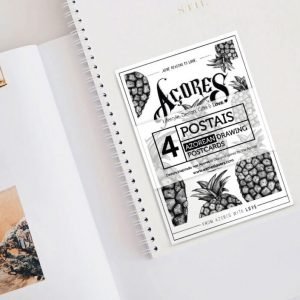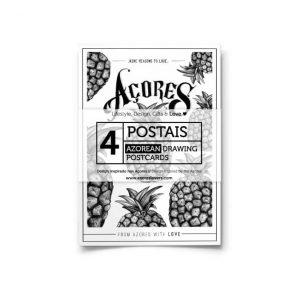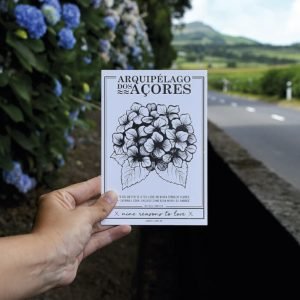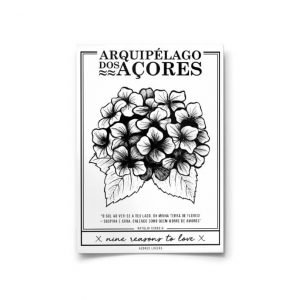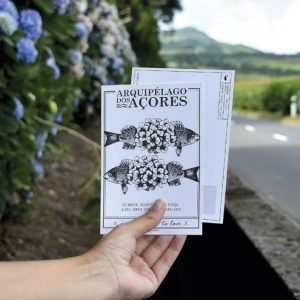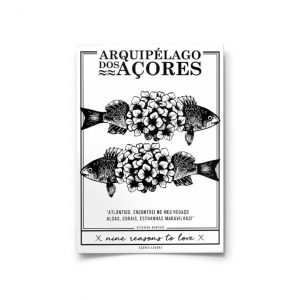São Miguel Turned Inside Out
At the green island live the "micaelenses" (the name given to the people from the São Miguel island). They are working people and still something conservative, marked by the emigration and very faithful to their own roots.
The people from São Miguel don't feel the island like those who visit it. But when they have to leave, the island goes with them in their heart and is planted in whatever coordinate of the world they are. They miss things they never valued before. José Saramago used to say that "it is necessary to leave the island to see the island". But, after all, what do they miss?
José Saramago already said that “it is necessary to leave the island to see the island”. But, after all, what do they miss?
Allow us to guide you through some of the genuine experiences of a resident.


NATURE IS YOUR PORCH
If in any part of the world you see a family making a roadside picnic it is, of course, a family from São Miguel. The beautiful roads covered with hydrangeas, with numerous spots for picnics and barbecues, covered by trees and stunning views, invites anyone to spread their towel and open their “cooler” to enjoy a picnic or a cooked meal fresh from the Ribeira Grande boilers or from Furnas boilers (1).
Inside the basket, they bring yeast cakes or homemade Santa Bárbara bread, madeleines, egg sandwiches or chorizo spread (also accepted with tuna), cod patties or pastries, a black pudding or chorizo to bake, and a passion fruit kima or a Special to help down.
Some places have free wood for the barbecue. The music is also free, whistled by several birds. If you find yourself in a coastal area devoid of lights and bustle, at dusk, you will almost certainly hear the unmistakable sound of the shearwater.

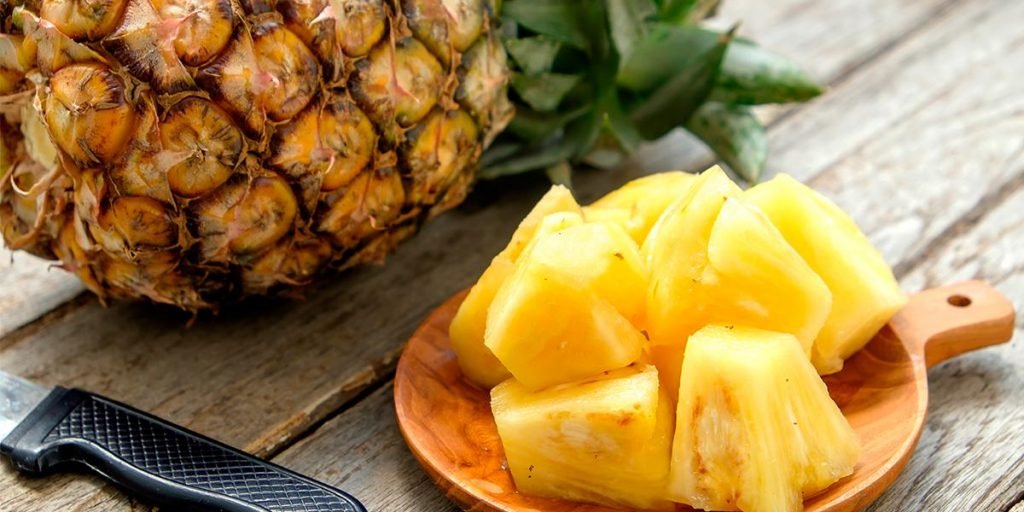
IT'S GOOD AS CORN!
If you find any indignant individual on a supermarket's pepper shelf, this is a São Miguel who can't do without his ground pepper for his spices. In a strange supermarket, soda pastry will also be lacking, the yeast cake and the village cheesecakes.
They yearn for a Furnas stew, a fish stew, and a good regional steak, and yearn for a fluff from Povoação or a ananas.
"IN FEBRUARY THERE IS CARNIVAL" AND MORE
Tired of Christmas and New Years parties?
Recover, because in February there's more! Ash Wednesday marks a religious period that is fraught with sobriety until Easter, which the inhabitants of São Miguel accept, but not before celebrating “as it should be”. Here, and on the other islands, the Carnival it doesn't have 3 days, but 4 weeks.
For nearly 100 years, on the four Thursdays before Carnival, the days of friends, friends, godfathers and godmothers have been celebrated, calling for the celebration of friendship in fun lunches or dinners, sometimes including some accessories carnival.
The Assaltos de Carnaval were also traditional, where individuals received people in their homes for evening dancing allusive to the court. Carnival balls continue in force, with particular emphasis on those at the Coliseu Micaelense, celebrated on Friday (gala), Saturday (fantasies) and Monday (gala) that precede Carnival, where various baskets of food in the competition parade , and where animation is guaranteed.
On Carnival Tuesday, the survivors invade the Ponta Delgada waterfront with trucks for the famous “Batalha das Limas”, where a fight against everyone begins, with bags and water balloons religiously prepared in group evenings, days or weeks before the event.

pilgrimages on the paths of faith
The pilgrimages in time of Lent appear in the century. XVI for the fear of nature, when earthquakes and volcanic eruptions devastated homes and families.
Today, hundreds of pilgrims they visit the island's churches and hermitages every year, in an act of faith, in search of answers or divine promises, or simply for the spirituality and meditation proper to this practice, in the sun or rain, with sores on their feet and extreme fatigue. The passage of a pilgrims' ranch leaves no one indifferent and evokes the solemnity of the moment since its chants are heard.
Part of the trail from Fenais da Ajuda – Lomba de São Pedro is also covered by pilgrims, so all lovers of walking trails are invited to do so. But to do it as the pilgrimage dictates, it is always with the sea to the left, therefore starting with the church of Fenais da Ajuda.

DON'T RELIGION AND PARTY MATCH?
On the fifth Sunday after Easter, the Feasts of the Holy Christ of Miracles, the biggest religious festival in the Azores. Emigrants and descendants from all over the world return to the island at this time of year to see the image of Senhor Santo Cristo pass by, in an emotional procession, along the flower paths in the streets of Ponta Delgada, where colorful mantles hang over the windows.
If this party is marked by signs of gratitude and promise, it is also marked by the gathering of family and friends, the smells and flavors of regional and national cuisine to choose from in countless stalls, the display of local products and crafts at the fair, and the entertainment guaranteed.
At Holy Spirit Feasts they are celebrated in various parishes and villages on the island as feasts of the people for the people, feasts of help, sharing and community, hosted by an emperor (or butler) who, as a rule, is later crowned. In these empires, as they are popularly called, after the procession and the coronation mass, the Soups of the Holy Spirit are distributed and, in many cases, it is added – but not only – wine, massa sovada and stewed meat, to the sound of popular music, folklore and singing, raffles and raffles.
Some empires still have parades of floats and ox carts. Each empire has its own particularity, but they all have a common purpose: the distribution of Pensions (alms) to those most in need.

IN SUMMER THE POPULAR MARCHES PARADE
In summer, all the saints help and, among bonfires, sardines, black pudding and wine, the popular marches, where floats, happy skirts and songs sung to St. Anthony, St. Peter and St. John follow one another, celebrating themes such as friendship and love. The marches are painstakingly prepared for three generations and several weeks before the event.
Magia de Santo António, the patron saint of lovers: at midnight on June 12, place well-folded pieces of paper in a container of water, each one with the name of a love written on it, and leave the container by the window, outside the house. In the morning, the most open piece of paper will indicate who your future love is.
Carla Pacheco

